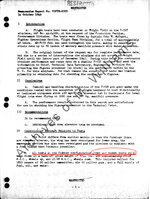- Thread starter
- #21
Dawncaster
Airman 1st Class
- 110
- Dec 23, 2013
wasn't the different in top speed in different test is only due to different fuel ?
P-51 Mustang Performance
case of your color graphs, only different is fuel.
case of Report No. NA-8284-A and AAF No. 44-64182, x2 bomb racks and x6 rocket racks added.
Last edited:

